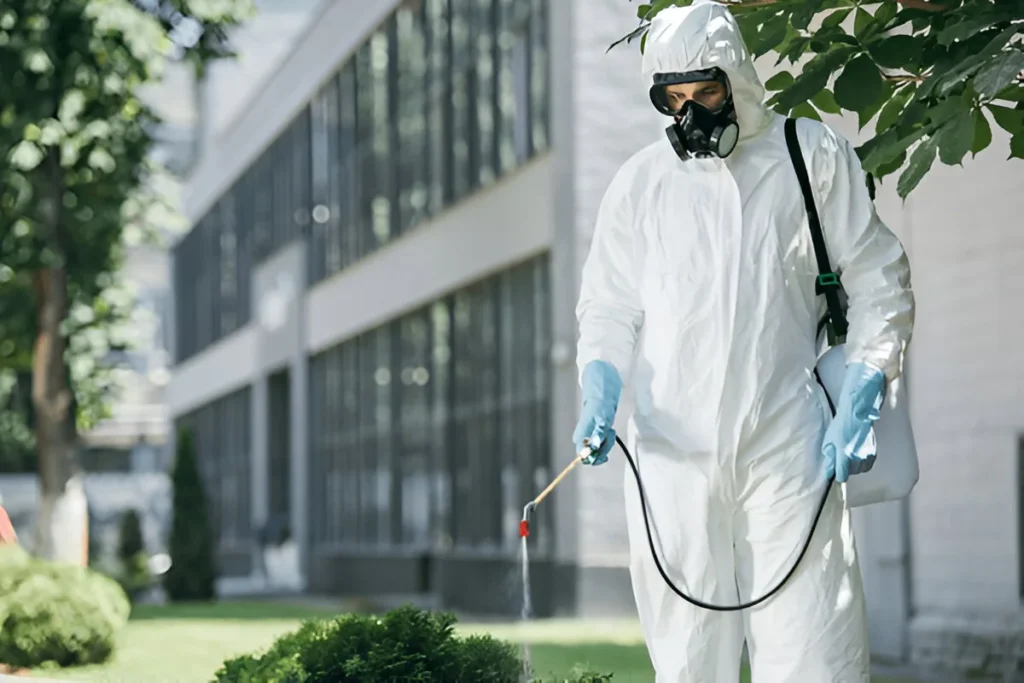-
Govind Bhawan,Kolkata - 700001
Govind Bhawan,Kolkata - 700001

Urban pest control is evolving, and biological control is at the heart of sustainable solutions. Learn how experts ensure eco-friendly, effective pest management.
The constant buzz of city life often hides an unwelcome reality—pests adapting and thriving in urban spaces. From cockroaches scuttling under kitchen counters to mosquitoes breeding in stagnant water, city environments provide ideal conditions for pests to multiply. While chemical treatments have been a go-to solution for decades, there’s a growing global shift towards a safer, more sustainable method: biological control.
This approach doesn’t just kill pests; it manages them using natural enemies, creating a balanced ecosystem that protects public health, the environment, and even the local economy. Let’s dive into how biological control is shaping the future of urban pest control and why it matters now more than ever.

Biological control is the use of living organisms—predators, parasitoids, pathogens, or competitors—to manage pest populations. Instead of relying solely on synthetic chemicals, this method introduces or encourages natural enemies that keep pests in check.
Common examples include:
What makes biological control unique is that it works with nature rather than against it. In urban environments where biodiversity is often reduced, reintroducing these natural enemies can help restore ecological balance.
Urban areas often see frequent pesticide use—sometimes even overuse—which can lead to chemical resistance in pests. Biological control reduces the need for these chemicals, keeping them as a backup tool rather than the first line of defense.
Chemical sprays don’t just target pests; they can harm non-target species like pollinators, birds, and aquatic life. Biological control methods are species-specific, ensuring minimal disruption to the surrounding ecosystem.
Whereas pesticides may offer quick results but require repeated application, biological control can offer lasting effects when natural enemies establish themselves in the environment.
By reducing chemical use, we minimize the risks of exposure to harmful substances—especially in densely populated areas like cities, where human contact with treated areas is inevitable.
Urban pest control is different from rural pest management because of factors like building density, human activity, and limited natural habitats. Here’s how biological control is adapted for cities:

Introducing natural enemies from another location to control invasive pests. Example: Introducing predatory beetles to control scale insects on ornamental plants.
Releasing large numbers of beneficial organisms to quickly suppress pests. Example: Using predatory mites in greenhouses to manage spider mites.
Protecting and enhancing the existing natural enemies in the ecosystem by reducing harmful practices and improving habitat conditions.
These examples prove that urban pest control can be effective without compromising safety.
Biological control is most effective when combined with other eco-friendly strategies under the Integrated Pest Management approach. IPM combines monitoring, prevention, and targeted treatment to achieve long-term control.
Key elements include:
By making biological control a core component of IPM, cities can ensure both safety and efficiency in pest management.
For Residents:
For Businesses:
While the benefits are substantial, biological control isn’t without its challenges:
This is where expert guidance becomes essential. Trained professionals can assess local conditions, choose the right biological agents, and monitor results for effectiveness.
Finding a pest control provider who understands the science of biological control can make all the difference. In Kolkata, professionals who follow eco-conscious strategies and advanced IPM techniques—like those recognized as the Best Pest Control Company in Kolkata—are setting new standards for sustainable urban pest control.
One such expert-led provider, Pestonix, blends biological methods with modern monitoring systems, ensuring pests are managed effectively without compromising public health or environmental safety. They demonstrate that when scientific precision meets eco-friendly values, pest control becomes not just a service, but a contribution to a healthier city.

Q1. Is biological control safe for children and pets?
Yes. Most biological control agents target specific pests and pose no harm to humans, pets, or beneficial wildlife.
Q2. How quickly does biological control work?
It can take a few days to weeks, depending on pest type, environmental conditions, and method used. However, results are often longer-lasting than chemical treatments.
Q3. Can biological control be used indoors?
Yes, certain beneficial insects, microbial sprays, and parasitoids can be safely used indoors under professional supervision.
Q4. Does biological control completely eliminate pests?
The goal is not always complete eradication, but sustainable management—keeping pest populations below harmful levels.
Q5. Is it cost-effective compared to chemical pest control?
While the initial investment may be slightly higher, long-term costs are often lower due to reduced need for repeated treatments.
Biological control is more than just a pest control method—it’s a philosophy of working with nature to create sustainable urban environments. By reducing chemical dependence, protecting biodiversity, and promoting long-term stability, it offers a future where pest management is both effective and environmentally responsible.
In cities where dense populations and complex infrastructure make pest control challenging, the right blend of biological methods and expert oversight is essential. When innovation is paired with environmental responsibility, pest management can pave the way for safer, greener, and healthier urban spaces.